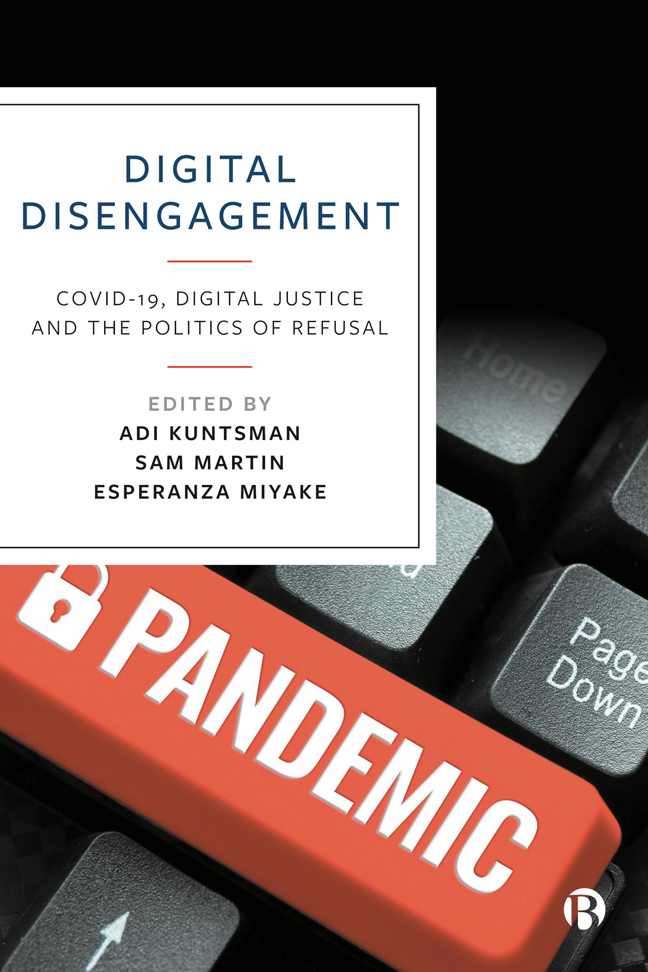Refine search
Actions for selected content:
48584 results in Computer Science
Sparcl: A language for partially invertible computation
- Part of
-
- Journal:
- Journal of Functional Programming / Volume 34 / 2024
- Published online by Cambridge University Press:
- 26 January 2024, e2
-
- Article
-
- You have access
- Open access
- HTML
- Export citation
Inferring social networks from unstructured text data: A proof of concept detection of hidden communities of interest
-
- Journal:
- Data & Policy / Volume 6 / 2024
- Published online by Cambridge University Press:
- 26 January 2024, e5
-
- Article
-
- You have access
- Open access
- HTML
- Export citation

Digital Disengagement
- COVID-19, Digital Justice and the Politics of Refusal
-
- Published by:
- Bristol University Press
- Published online:
- 25 January 2024
- Print publication:
- 14 July 2023
Figures
-
- Book:
- Complexity Economics and Sustainable Development
- Published online:
- 04 January 2024
- Print publication:
- 25 January 2024, pp xiii-xv
-
- Chapter
-
- You have access
- Open access
- Export citation
Dedication
-
- Book:
- Complexity Economics and Sustainable Development
- Published online:
- 04 January 2024
- Print publication:
- 25 January 2024, pp v-vi
-
- Chapter
-
- You have access
- Open access
- Export citation
Tables
-
- Book:
- Complexity Economics and Sustainable Development
- Published online:
- 04 January 2024
- Print publication:
- 25 January 2024, pp xvi-xvi
-
- Chapter
-
- You have access
- Open access
- Export citation
Part II - A Global View of Sustainable Development
-
- Book:
- Complexity Economics and Sustainable Development
- Published online:
- 04 January 2024
- Print publication:
- 25 January 2024, pp 165-166
-
- Chapter
-
- You have access
- Open access
- Export citation
9 - The Impact of International Aid
- from Part II - A Global View of Sustainable Development
-
- Book:
- Complexity Economics and Sustainable Development
- Published online:
- 04 January 2024
- Print publication:
- 25 January 2024, pp 231-262
-
- Chapter
-
- You have access
- Open access
- Export citation
Anisotropic span embeddings and the negative impact of higher-order inference for coreference resolution: An empirical analysis
-
- Journal:
- Natural Language Engineering / Volume 30 / Issue 6 / November 2024
- Published online by Cambridge University Press:
- 25 January 2024, pp. 1301-1322
-
- Article
-
- You have access
- Open access
- HTML
- Export citation
Frontmatter
-
- Book:
- Complexity Economics and Sustainable Development
- Published online:
- 04 January 2024
- Print publication:
- 25 January 2024, pp i-iv
-
- Chapter
-
- You have access
- Open access
- Export citation
4 - A Computational Model
- from Part I - A Complexity Approach to Sustainable Development
-
- Book:
- Complexity Economics and Sustainable Development
- Published online:
- 04 January 2024
- Print publication:
- 25 January 2024, pp 104-128
-
- Chapter
-
- You have access
- Open access
- Export citation
Integrating data, knowledge, and expertise for policy advice: understanding the practices of Dutch organized crime control professionals
-
- Journal:
- Data & Policy / Volume 6 / 2024
- Published online by Cambridge University Press:
- 25 January 2024, e4
-
- Article
-
- You have access
- Open access
- HTML
- Export citation
Contents
-
- Book:
- Complexity Economics and Sustainable Development
- Published online:
- 04 January 2024
- Print publication:
- 25 January 2024, pp vii-xii
-
- Chapter
-
- You have access
- Open access
- Export citation
5 - Calibration and Validation
- from Part I - A Complexity Approach to Sustainable Development
-
- Book:
- Complexity Economics and Sustainable Development
- Published online:
- 04 January 2024
- Print publication:
- 25 January 2024, pp 129-164
-
- Chapter
-
- You have access
- Open access
- Export citation
Reliability assessment of off-policy deep reinforcement learning: A benchmark for aerodynamics
-
- Journal:
- Data-Centric Engineering / Volume 5 / 2024
- Published online by Cambridge University Press:
- 25 January 2024, e2
-
- Article
-
- You have access
- Open access
- HTML
- Export citation
1 - Introduction
- from Part I - A Complexity Approach to Sustainable Development
-
- Book:
- Complexity Economics and Sustainable Development
- Published online:
- 04 January 2024
- Print publication:
- 25 January 2024, pp 3-21
-
- Chapter
-
- You have access
- Open access
- Export citation
2 - Policy Prioritisation, Complexity, and Agent Computing
- from Part I - A Complexity Approach to Sustainable Development
-
- Book:
- Complexity Economics and Sustainable Development
- Published online:
- 04 January 2024
- Print publication:
- 25 January 2024, pp 22-52
-
- Chapter
-
- You have access
- Open access
- Export citation
7 - Government Spending and Structural Bottlenecks
- from Part II - A Global View of Sustainable Development
-
- Book:
- Complexity Economics and Sustainable Development
- Published online:
- 04 January 2024
- Print publication:
- 25 January 2024, pp 188-206
-
- Chapter
-
- You have access
- Open access
- Export citation
